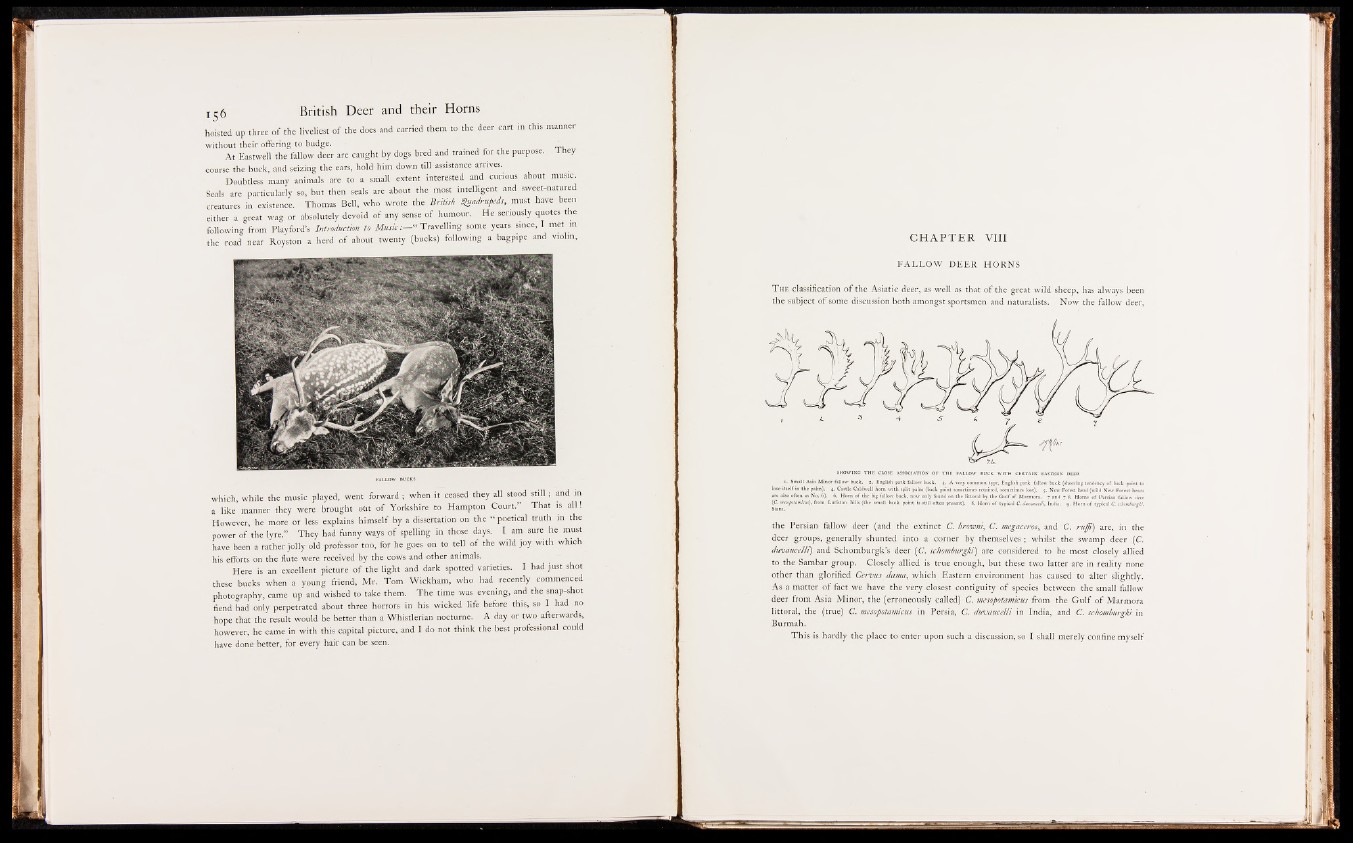
hoisted up three of the liveliest of the does and carried them to the deer cart in this manner
without their offering to budge.
At Eastwell the fallow deer are caught bpftetgs bred, and trained for the purpose. They
course the buck, and seizing the ears, hold him down till assistance arrives.
Doubtless many animals are to a small extent interested and curigiis about music
Seals are particularly so; but then seals are .abodt the most intelligent and sweet-natured
creatures in. existence, . Thomas Bell, who wrote the British Quadrupeds, must have been
either a great wag or ibsoliitely devoid of any sense o f humour. He seriously quotes the
following from Playford’s Introduction to M usic Travelling some years since, I met in
the road neSl Royston a herd of abouj .ryvengMucks ) following a bagpipe and violin,
FALLOW BUCKS
which, while the music played, wen|torward ; when it ceased they all stood s t ill; and in
a like manner they were b ro u gh S )flt|§ f Yorkshire tSjHampton Courts*’ That is
However, he more or less explains himself by a flsertatiofl on the “ poetical truth in the
power o f the l y r e .B T hey had funny ways o f spelling in those days. I am sure he roust
have been a rather jolly old professortoo, for he goes on to tell of the wild joy with which
his efforts on the flute were received by the coWs and other animalsit i f "
Here is an excellent picture o f the light ij$ l dark spotted varieties. I had just shot
these bucks when a young friend, Mr. Tom Wickham, who had recently commeacpd
photography, came up and wished to take them. The time was evening, and the snap-shot
fiend had only perpetrated about three horrors in his wicked life before this, so I had no
hope that the result would be better than a Whistlerian nocturne. A day or two afterwards,
however, he came in with this capital picture, and I do not think the best professionaljeould
have done better, for every hair can be seen.
CH A P T E R VIII
FALLOW DEER HORNS
T he classification of the Asiatic deer, as well as that of the great wild sheep, has always been
the subject of some discussion both amongst sportsmen and naturalists. Now the fallow deer,
the Persian fallow deer (and the extinct C. browni, C . megaceros, and C. ruffi) are, in the
deer groups, generally shunted into a corner by themselves ; whilst the swamp deer (C.
duvaucelli) and Schomburgk’s deer (C. schomburgkt) are considered to be most closely allied
to the Sambar group. Closely allied is true enough, but these two latter are in reality none
other than glorified Cervus dama, which Eastern environment has caused to alter slightly.
As a matter o f fact we have the very closest contiguity o f species between the small fallow
deer from Asia Minor, the (erroneously called) C. mesopotamicus from the G u lf o f Marmora
littoral, the (true) C. mesopotamicus in Persia, C . duvaucelli in India, and C. schomburgki in
Burmah.
This is hardly the place to enter upon such a discussion, so I shall merely confine myself